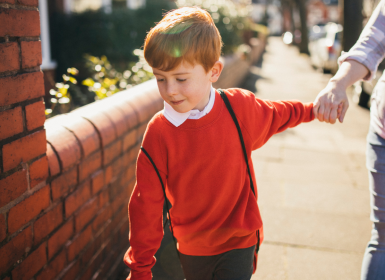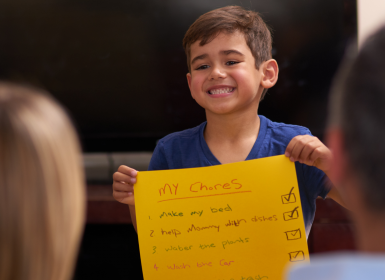
Managing children’s behaviour is a challenge for every parent. As children develop, they often use behaviour to express their feelings and needs because they haven’t yet learnt how to communicate them effectively. Sometimes, the behaviours that children use to communicate their feelings and needs can be undesirable, such as tears and temper tantrums. While these behaviours can be challenging, it’s important not to jump to punishment. Instead, parents should use these situations as opportunities to teach their children to express themselves through more positive behaviour.
When children learn to express themselves through positive behaviours, they are more likely to build the confidence and skills that will help them to achieve their goals, make friends and build strong, healthy relationships.
There are a range of strategies and structures that parents and carers can put in place to encourage positive behaviours at home.
Tips for Parents to Encourage Positive Behaviour in Children
Spend quality time together
Building a strong relationship with your child is one of the most important influences for promoting positive behaviour now and into the future.
Spending regular, dedicated time with your child, for example, doing an activity they enjoy together, shows them that you’re paying attention to them and their interests. Giving your child attention in positive interactions like this can help to minimise the likelihood of them seeking attention through undesirable behaviours.
Model positive behaviours yourself
Children often look to you or other adults to guide their own behaviour. Try to demonstrate the behaviours you expect of your child in your own actions. For example, if you’d like your child to clean up after playtime, show them how you clean up after finishing your own activities. If you don’t want your child to raise their voice, speak gently with them when you’re frustrated. It can also be helpful to get your child’s attention when you’re about to model a desired behaviour, “Look, I’ve finished reading my book so I’m going to put it back on the shelf until I’m ready to read it again.”
You can read more about emotional co-regulation strategies here.
Identify and acknowledge emotions
At times, children act out simply because they aren’t sure how to communicate their feelings or needs with you. In these situations, let your child know that you understand how they are feeling and help them to put a label on the emotion they are trying to express. When your child is better able to recognise their feelings, they’ll be able to communicate their needs through more positive behaviours each time they experience those feelings in the future.
For young children and children with communication difficulties, using visual aids can help to identify and communicate emotions.
Define family rules and routines
Rules and routines help provide predictability for your child and help them to prepare for what’s going to happen throughout the day. This structure can help children better prepare and regulate their emotions, which can result in them behaving more positively.
Ensure that any rules made are simple but firm, so that your child understands and remembers what is expected of them. When reinforcing rules, ensure you are consistent and that any consequences are fair.
Use positive language
Communicate clearly about the behaviour you expect from your child by framing requests through positive language. When giving feedback or directions, try to communicate what you would like your child to do, and why, rather than what you don’t want them to do. For example, if your child is jumping on the lounge, instead of saying, “Don’t jump on the lounge,” try saying, “Jumping on the lounge is dangerous. Please sit down.” Phrasing your request in this way helps your child understand why the behaviour is unacceptable and helps guide them towards a more positive behaviour instead.
Acknowledge good behaviour
How we respond to a child’s behaviour can have a significant influence on how they act in certain situations in the future. It’s natural to react and provide feedback when your child is misbehaving, but it’s also important to recognise when your child is showing good behaviours.
When giving feedback, avoid general phrases like “Good job!”. Make a point to acknowledge your child’s positive behaviours with specific feedback about what they’re doing well. An example of specific positive praise might be, “I saw that you gave your sister the blocks when you were finished with them. That was good sharing.” This type of acknowledgement reinforces how you expect them to behave.




